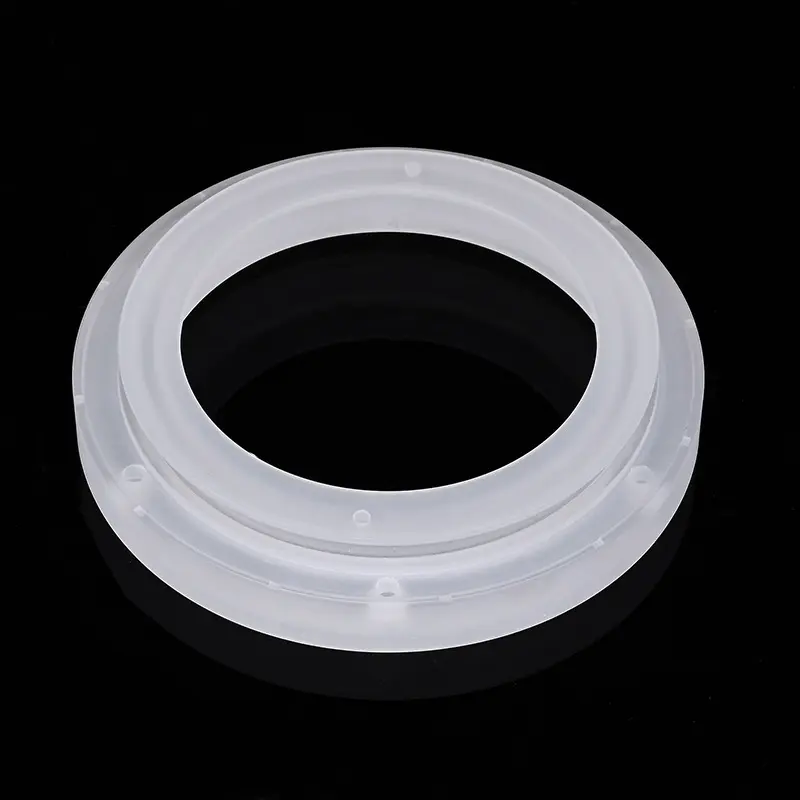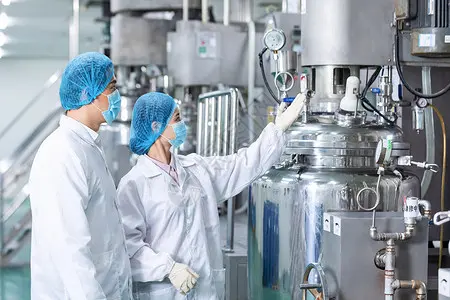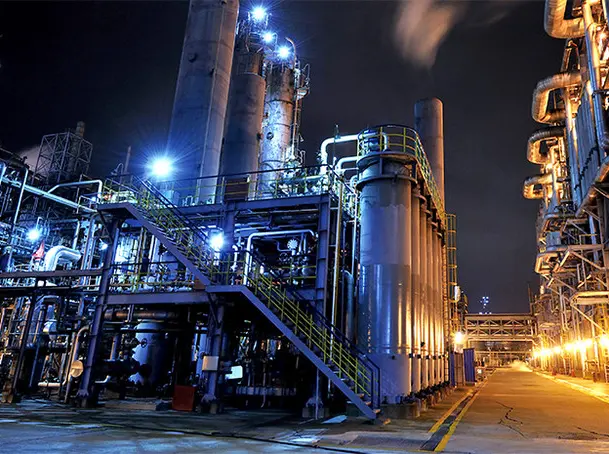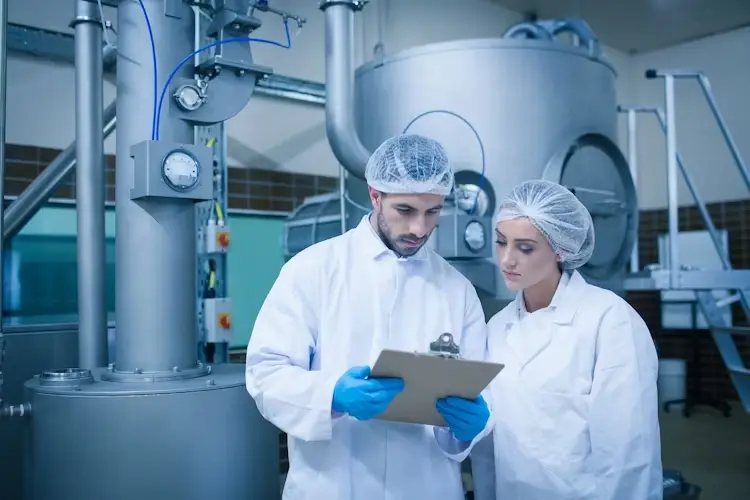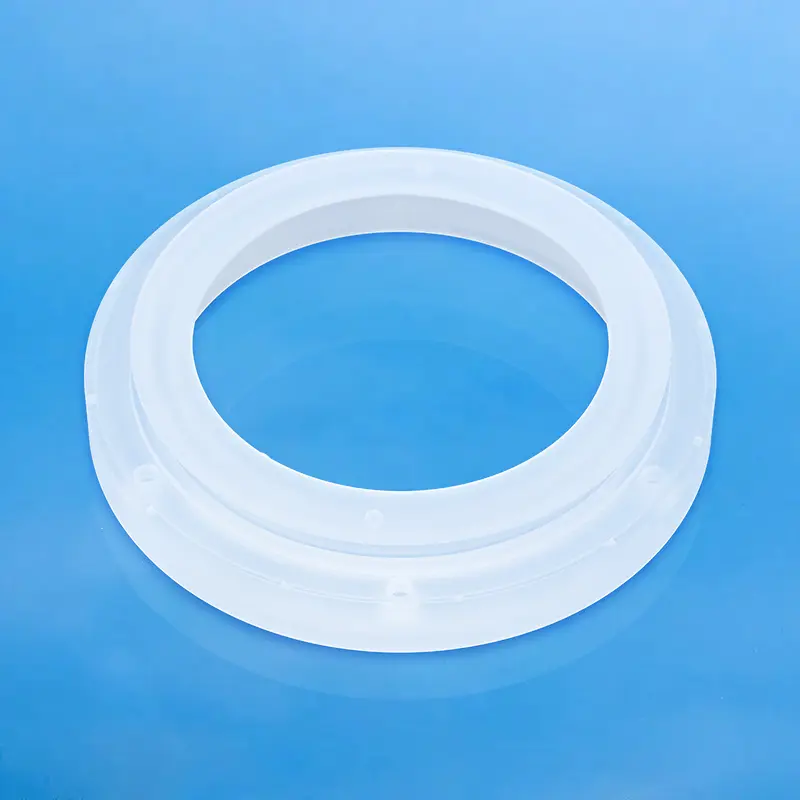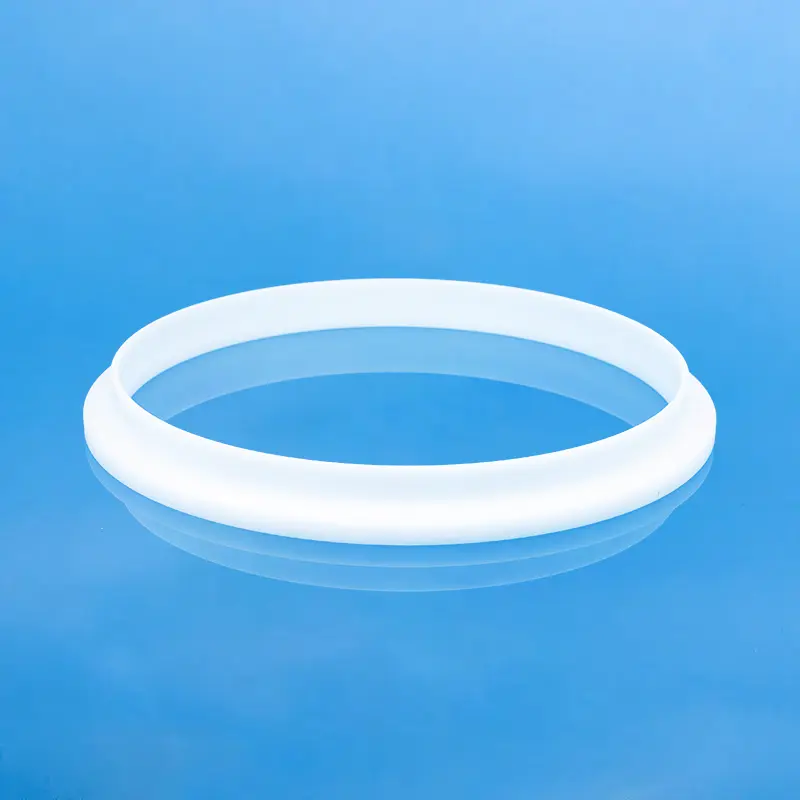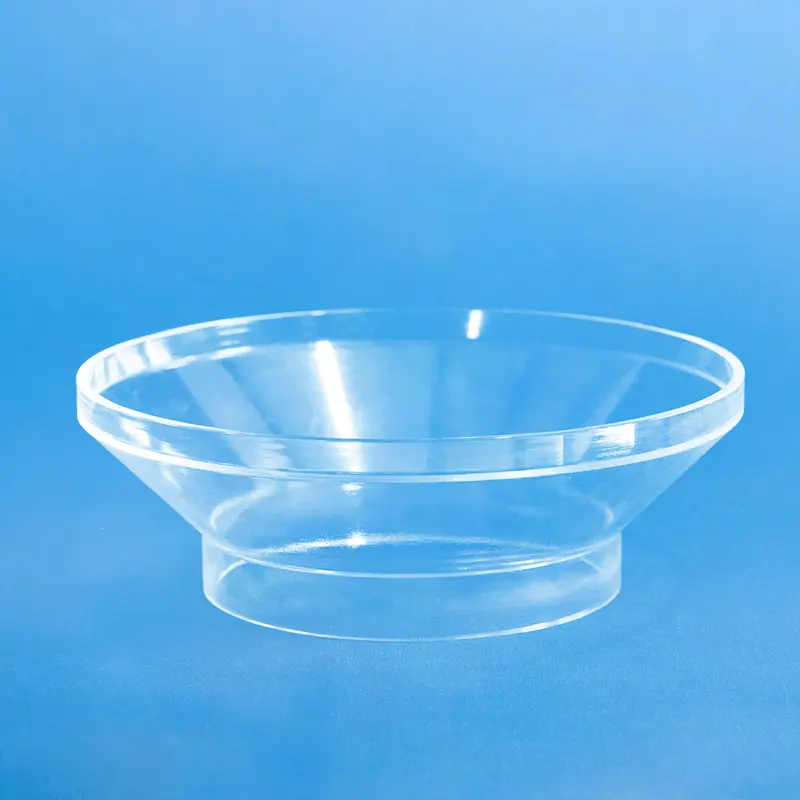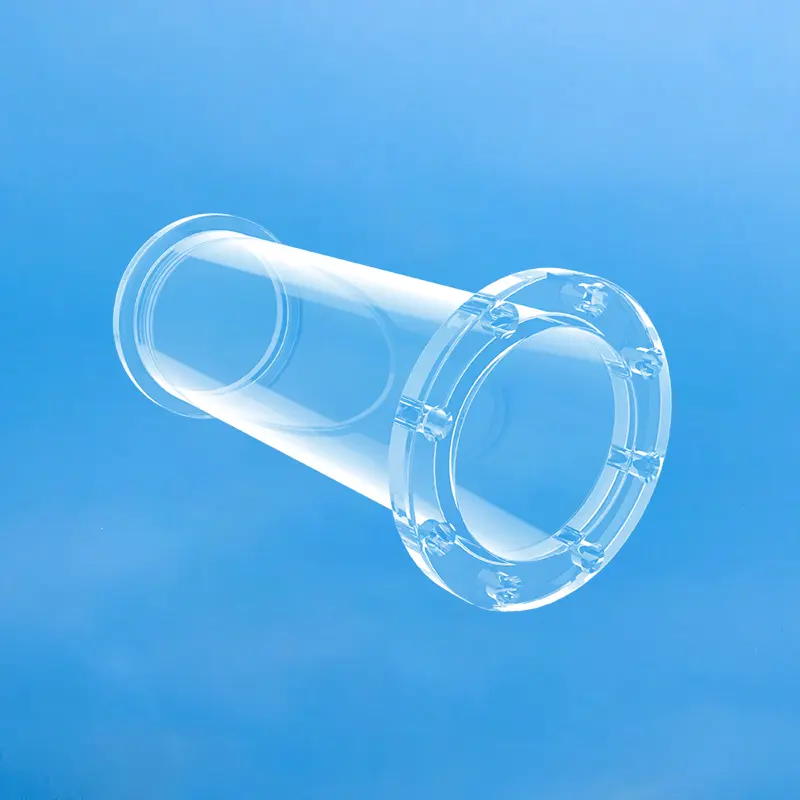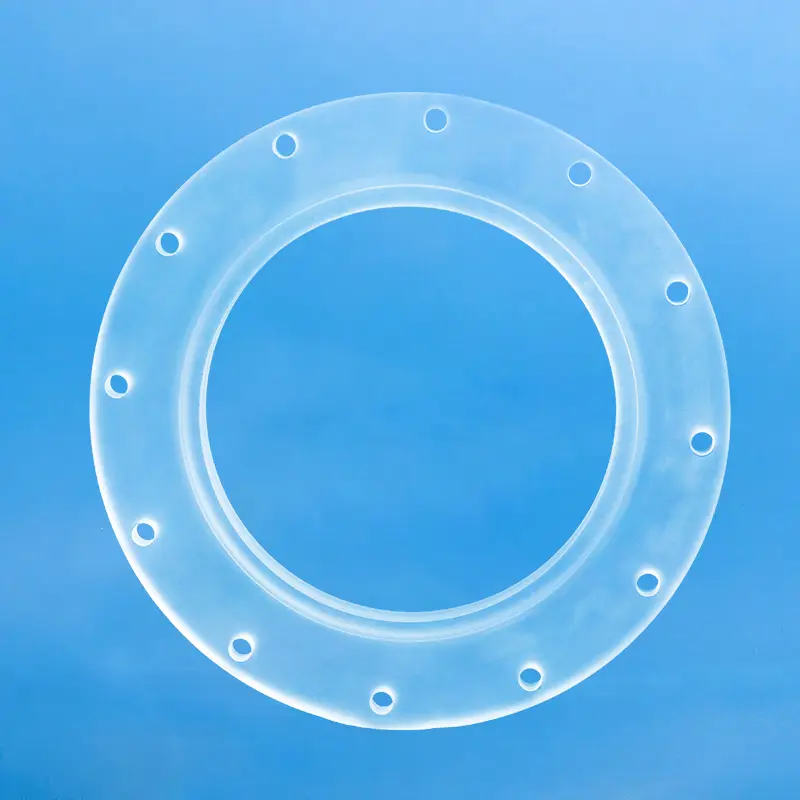Our quartz flanges, also known as fused silica flanges, are precision-engineered for critical applications requiring extreme purity, high temperature resistance, and vacuum compatibility. Ideal for semiconductor, optics, and laboratory equipment, these flanges ensure reliable, corrosion-resistant connections. Custom designs are available to meet your exact specifications.
| Property Content | Property Values |
|---|---|
| SiO2 | 99.99% |
| Density | 2.2×10³ kg/cm³ |
| Hardness | 5.5 - 6.5 Mohs' Scale 570 KHN 100 |
| Tensile Strength | 4.8×10⁷ Pa (N/mm2) (7000 psi) |
| Compression Strength | >1.1×10⁹ Pa (160,000 psi) |
| Coefficient of Thermal Expansion | 5.5×10⁻⁷ cm/cm·°C (20°C-320°C) |
| Thermal Conductivity | 1.4 W/m·°C |
| Specific Heat | 670 J/kg·°C |
| Softening Point | 1730°C (3146°F) |
| Annealing Point | 1210°C (2210°F) |
| Strain Point | 1120°C (2048°F) |
| Work Temperature | 1200°C (2192°F) |
| Electrical Resistivity | 7×10⁷ ohm cm (350°C) |
| Size | Customized |
| Logo | Customized Logo Accept |
High-Temperature Performance
Quartz flanges can withstand extremely high temperatures, typically above 1000°C, making them suitable for high-temperature environments, such as high-temperature steam pipes and molten metal transport systems.
Excellent Chemical Stability
Quartz flanges exhibit exceptional resistance to various chemical substances, including strong acids, strong bases, and organic solvents, which makes them highly favored in the chemical and pharmaceutical industries.
High-Purity Material
Quartz flanges are manufactured from high-purity quartz glass, allowing their use in cleanroom environments within the semiconductor and microelectronics industries as they do not release particles or chemicals that could contaminate products.
Good Mechanical Strength and Durability
Quartz flanges possess good mechanical strength and durability, maintaining their structural integrity even under repeated temperature and pressure fluctuations, thereby extending the lifespan of equipment.
Application Scenario
Petrochemical Industry
Within the petrochemical industry, quartz flanges serve as important pipe connection components. They meet the requirements for harsh environments characterized by high temperatures, high pressure, and strong acids/bases. Their unique impact resistance makes them particularly useful for connecting pumps and valves.
Electronics and Electrical Industry
Quartz flanges are widely applied in the electronics and electrical industries, such as for connecting precision pipes in LED chip production, and oxide synthesis reactions in solar cell manufacturing. Their high purity and corrosion resistance ensure the precision connections and the purity and continuity of reaction processes.
The primary material of quartz flanges is high-purity quartz glass, which exhibits exceptional corrosion resistance and high-temperature performance. It can effectively resist the erosion of various chemical substances, including strong acids, strong bases, and organic solvents, while maintaining stability in high-temperature environments (typically exceeding 1000°C), without deforming or melting.
Quartz flanges are widely used in industries such as chemical processing, petrochemicals, electronics and electrical, and food manufacturing. In the chemical and petrochemical industries, they are used for pipe connections involving high-temperature and corrosive media. In the electronics and electrical industries, they are used for precise pipe connections in LED chip production and solar cell manufacturing. In the food manufacturing sector, they are used for transporting slightly corrosive materials, ensuring food safety.
The maintenance and replacement cycles of quartz flanges depend on multiple factors, including the operating environment, temperature, pressure, and the type of chemical media involved. Generally, if quartz flanges are properly used and regularly maintained, their service life can be quite long. However, with increased use, they may gradually lose performance due to wear, contamination, or the formation of micro-cracks. It becomes necessary to replace them when such issues occur. The specific maintenance and replacement cycles should be determined based on actual usage conditions and the manufacturer’s recommendations.
Frequently asked questions
We specialize in the end-to-end manufacturing of high-purity quartz glass components. Our core product lines include:
Quartz Tubing & Rods: A wide range of diameters and specifications.
Quartz Plates & Discs: Precision-cut and polished for optical and industrial use.
Quartz Labware: A full suite of standard and custom glassware, including beakers, flasks, and boats.
Semiconductor-Grade Quartz: High-purity components like process tubes and carriers for semiconductor fabrication.
Custom Fabricated Components: We can produce complex parts tailored to your unique designs and specifications.
Yes. Custom fabrication is at the core of our business. With over a decade of specialized experience, we partner with companies to provide expert OEM/ODM services. Our capabilities include welding, grinding, drilling, polishing, bending, and other precision processing techniques to create components that meet your exact requirements.
Quality is paramount in our manufacturing process. We are an ISO 9001:2015 certified manufacturer, ensuring that our processes meet international quality management standards.Our products also undergo rigorous SGS testing for purity and performance. We use high-purity raw materials (up to 99.998% SiO2) to produce fused quartz and fused silica products with exceptional thermal stability, high-temperature resistance, and chemical inertness.
We've streamlined our process to be as efficient as possible:
Submit Your RFQ: Send us your technical drawings, specifications, and requirements via our website contact form or email.
Rapid Response: You can expect an initial response within minutes and detailed communication within half an hour.
Design & Proposal: We will deliver a detailed design proposal and a competitive quote within 24 hours.
Prototyping & Production: Upon approval, we move swiftly from prototyping to full-scale production to meet your deadlines.
Partnering with Aoxin Quartz offers several key advantages:
Proven Expertise: With 10+ years in the industry, we have the technical knowledge to tackle complex challenges.
One-Stop Solution: We manage the entire production process, from sourcing high-purity raw materials to fabricating and finishing complex components.
Competitive Value: Located in a major quartz production hub, we leverage an efficient supply chain and advanced manufacturing to offer exceptional quality at a competitive price point.
Dedicated Partnership: Over 90% of our clients become long-term partners. We are committed to your success through responsive service, reliable quality, and innovative solutions.

